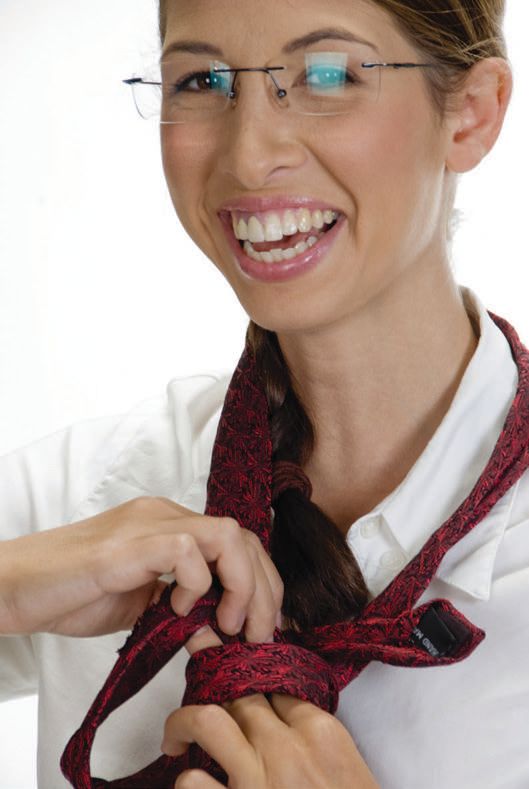A Tribological Day
Dr. Martin Webster | TLT President's Report August 2015
Most people are blissfully unaware of the many ways our science impacts their lives.

A scholarly paper describes how everyday tasks such as hair combing, teeth brushing and even tie tying are affected by tribological processes.
www.canstockphoto.com
AND WHAT IS IT THAT YOU DO? We all get asked this question, often at social functions or during work-related meetings. I have struggled to give a good answer to this question for more than 30 years, and I have not found an ideal response yet.
For the most part, my response depends on who is asking the question. If I know that they have a science or engineering background, I reply that I am a tribologist and wait for the inevitable quizzical look. I then proceed to explain that it is the study of interacting surfaces in relative motion and perhaps go on to say that it combines engineering, chemistry and physics to study lubrication, friction and wear.
If the questioner is not a technologist, I answer that I am involved in developing lubricants to help machines run more efficiently and last longer. We all know that this does not even begin to explain the rich and diverse world of tribology. The fact that tribology surrounds us and has unseen effects on our daily lives is one of the reasons that the topic continues to fascinate me.
Prof. Duncan Dowson, one of the founders of the modern study of tribology, also understands the pervasive impact of tribology all around us. In a wonderful scholarly paper, from which I have shamelessly stolen from for this article’s title, Prof. Dowson takes us through the daily events that are common for most of us and illustrates the tribological processes at work (
1). It starts with our morning routines and covers such topics as bathing, teeth cleaning and hair combing.
As the day continues, he considers how the tribology of our attire not only affects its function, such as the friction and wear of shoe materials, but also how it feels to us. Even the importance of friction on the stability of necktie knots is revealed. Later in this hypothetical day, the tribological mechanisms at work in our various digestive functions are described along with other biolubrication mechanisms such as the lubrication and debris removal that occurs quite literally in the blink of an eye. If our bodies fail us, he describes the ongoing efforts to make replacement parts that function nearly as well as the originals.
The tribological wonders of the natural world are not ignored either. He ponders how a fly can walk up a wall, how a snail moves and what a marvelous bearing birds must have in their wings to allow them to fly. Of course today biomimicking and bio-inspired tribology are helping us think about new ways to lubricate inanimate objects. The article is a wonderful read and illustrates how scientific principles can be used to reveal how the world around us works.
Most of us experience our lives without recognizing how tribological processes influence us. In a frictionless world, movement of any sort would be virtually impossible. Conversely this is also true for a world in which friction is infinite. We have taken enormous strides to optimize tribological processes that enable all manner of devices and products to work for us. Tribology is the unsung hero in many of the technologies that make our lives more comfortable, enjoyable and productive.
At the end of his article, Prof. Dowson challenges the reader to think of more examples. Perhaps we can collectively take him up on his challenge. If you have discovered surprising applications of tribology, please email them to me at the address below and I’ll share them in a future column to help illustrate how important our topic is to life on this planet.
More important, I may even be able to solve my 30-year-old problem and provide a better answer to the question, “And what is it that you do?”
REFERENCE
1.
Dowson, D. (2009), “A tribological day,”
Proceedings of the Institution of Mechanical Engineers, Part J: Journal of Engineering Tribology,
223 (3), pp. 261-273.
 Martin Webster is a senior research associate for ExxonMobil Research and Engineering in Annandale, N.J. You can reach him at martin.n.webster@exxonmobil.com
Martin Webster is a senior research associate for ExxonMobil Research and Engineering in Annandale, N.J. You can reach him at martin.n.webster@exxonmobil.com.